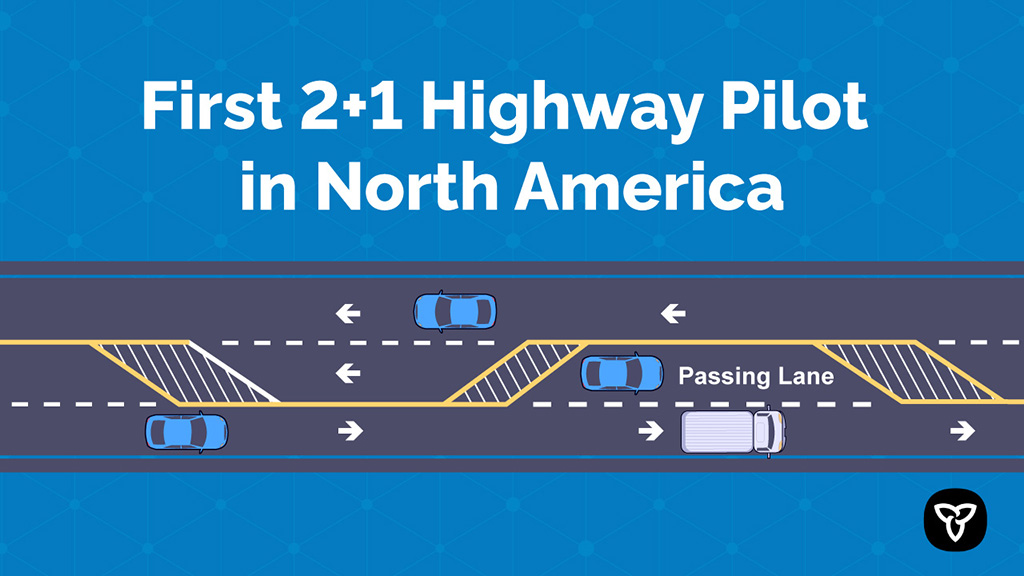As part of an effort to increase road safety, especially in northern Ontario, the Ministry of Transportation (MTO) will be constructing North America’s first 2+1 roadways in the province.
But construction isn’t going to happen any time soon and whether the 2+1 concept is eventually rolled out across the province depends on the findings of a test pilot on two sections of Highway 11 north of North Bay, attendees at a Good Roads seminar were told.
Design and assessment work for the two potential locations is proceeding, said MTO’s highway design office manager Mike Pearsall.
The first section is a 14-kilometre-long stretch from Sand Dam Road to Ellesmere Road, while the second location is a 16-kilometre-long section from Highway 64 to Jumping Caribou Lake Road.
Long used in Ireland, Sweden, Australia and Germany, 2+1 roadways are basically three-lane highways with a centre passing lane that changes direction approximately every two to five kilometres and are typically divided by a median barrier.
Each alternating lane is typically from 1.5 to two kilometres long, although they may be as short as 0.8 kilometres or as long as four kilometres, said Pearsall.
“The 2+1 highway model used in other jurisdictions around the world has been shown to improve traffic flow and safety. Some of the roads (in those countries) have been in service since the 1980s and have a good safety record,” he said.
As described by Pearsall, the ultimate selection of the two Highway 11 pilot test sites was the culmination of an intensive and exhaustive study by an MTO advanced working group that examined several sites.
Meetings with traffic officials in Ireland, Sweden, and Australia were conducted and a series of internal MTO workshops based on a “value analysis format” were held in 2021 to establish the different site selection criteria, he said.
The highway design office, which he heads, reviewed existing design standards and 2+1 roadway designs from various jurisdictions and then developed design guidance on what would be an acceptable roadway model for use in Ontario.
Consultations with numerous stakeholders, including representatives from the Temiskaming Shores and Area Chamber of Commerce, were also held.
A number of factors had to be taken in account, notably traffic operating characteristics. Roadways with an annual average daily traffic count ranging from 4,000 to 15,000 would benefit the most. There would be little or no improvement on roadways below or above those figures, he said.
Other issues examined included the proximity of MTO patrol yards, whether the roads under consideration were heavily used by agricultural vehicles or cyclists, geometric standards, such as horizontal curves, and if the roads were crossed by railways.
The working group also assessed the impact of intersections and entrances to private homes. Placing median barriers to accommodate private entrances should be avoided the working group decided, he pointed out.
A detailed design at the 30-per-cent mark is expected to be completed this summer. Construction cost estimates are in the range of $4 to $7 million per kilometre, said Pearsall.











Don’t we already have something similar in a way on many roads, where there is a third lane built for several miles. I believe it is called a passing lane and gives the faster drivers a chance to pass some of the slower ones who are actually holding up traffic behind them.